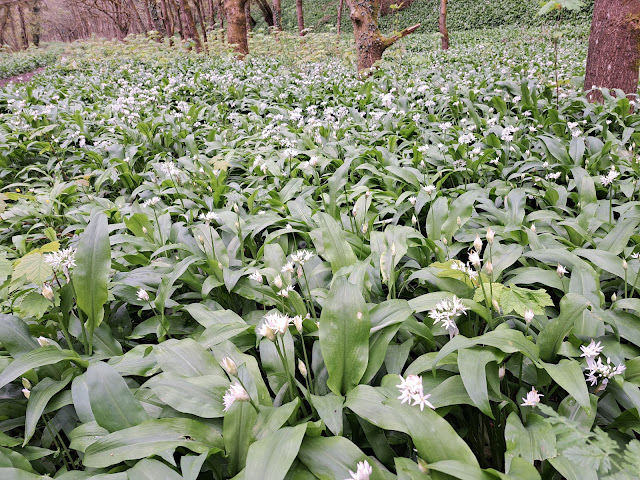Like pools of water, drifts of bluebells float in the woods. Here blooming at Damery on the slopes above the road while on the lower, damper ground near the river it's Ramsons or Wild Garlic that proliferates.
The mass of flowers is still to reach its white climax but the leaves are ready for picking if you want to make a nice wild garlic pesto.
Meanwhile, back to the bluebells.
These are English bluebells (Hyacinthoides non-scriptus) as opposed to Spanish Bluebells (Hyacinthoides hispanica), an introduced species. Spanish blubells are a cause for concern in British woodlands because they hybridise with the English bluebells. This could result in the disappearance of the English species. The hybrid bluebell (Hyancinthoides x massartiana) is the one commonly found in gardens.
How to tell the difference? There are two easy ways and two a bit harder:
- English bluebells usually droop over to one side at the top while Spanish stand erect with flowers all round the stem
- The petals on the tubular English curl right back while on bell-shaped Spanish and hybrid they flare out but don't curl right back
- If you look inside, the English bluebells have creamy white anthers and the Spanish and hybrid have blue or greenish anthers (Except they all produce white flowering forms sometimes which have white anthers).
- Spanish and hybrid have broader leaves (1-3.5cm) than English (0.7-1.5cm) - but this is only easy if you get your eye in.
English Hybrid/Spanish







No comments:
Post a Comment
I just love getting comments so go ahead.